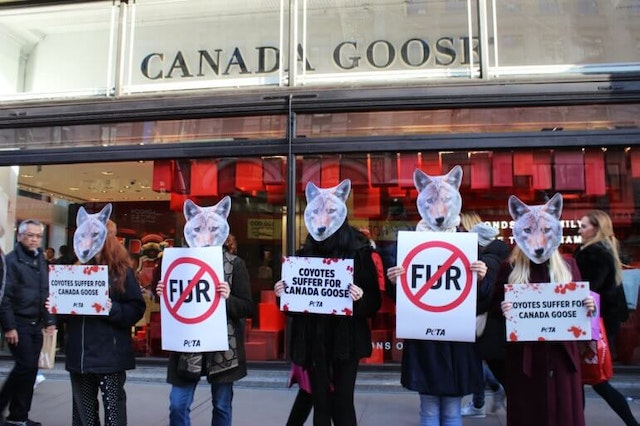The target of activists, Canada Goose is trying to hold itself to higher ESG standards
The brand has been on the receiving end of damaging press coverage and the outrage of animal rights protesters. To prove its naysayers wrong, it's doubling down on its sustainable journey – here’s how.

Canada Goose ceased manufacturing with fur in 2022 but continues to use down / Canada Goose
When Gavin Thompson, senior vice-president of corporate citizenship at Canada Goose, first joined the outdoor brand, he says there was plenty of desire to transform it into one that was better for the planet: “But it wasn’t formalized or departmentalized.”
He believes a barrier to many companies looking to transform internally is that the sustainability department is siloed – sitting apart from the rest of the business. “At Canada Goose it’s ingrained across every aspect of the business. It’s part of our purpose and that still rings true today.”
Advertisement
While Thompson posits Canada Goose is an inherently sustainable company, many would argue this hasn’t always been the case. Founded in Toronto in 1957, for years, it was the target of activists from the anti-fur movement, with the likes of Peta targeting its New York and London stores in protest of the brand’s use of fur.
Canada Goose officially turned its back on fur in 2022, a choice which Thompson said was largely business-led. “We knew we could design great products, functional products without the use of fur.” Since the decision, Peta has announced a moratorium on its campaign against the brand. However, it now has its sights set on the widespread use of other animal products in fashion, including wool, leather and down.

Thompson argues that fur and down arguably have more sustainable properties due to their biodegradability: “They are materials that can be reused and recycled too,” and says it’s continuing to invest in new materials as part of its transition. “The work never stops on the materials front.”
This push is reflective of the fact that there has never been more awareness among consumers regarding the sourcing and quality of materials in products: “They want to know what they are wearing, they want to know it’s not damaging the planet, and they want to know that it’s not just going to end up in landfill,” he explains.
Advertisement
The next frontier is the prevalence of forever chemicals. In 2019, the company endeavored to have its materials approved by Bluesign – the company that sets the standard for environmental and worker safety in textile manufacturing.
“Because we are a very function-forward company, we needed to ensure our materials were not chemical-heavy or full of “forever chemicals” as they’re called. So we set out to have 90% of our materials Bluesign approved, and we achieved that last year, ahead of our 2025 goal, which was a big moment for us.”
He says it’s a difficult balance to strike. Its parkas range anywhere in price from £800 to over £1700 and come with the promise of lasing “generations," so it needs to ensure it’s utilizing preferred fiber materials without compromising on the longevity or the function of the garment.
One way it promotes circularity is through the Generations platform that sells “gently loved” Canada Goose products at a reduced cost, ensuring items with life left in them are passed on to new consumers. That is now at the forefront of Canada Goose’s marketing push. Thompson says it’s a great way to onboard younger customers to the brand as it makes the not-insignificant cost of a Canada Goose jacket more accessible yet still speaks to their passion for sustainability. Meanwhile, its warranty ensures that at the end of a product’s life, it can be returned to the brand for recycling or for the materials to be donated.
He adds that through the brand’s resource center initiative, used materials are donated to the Indigenous communities in the north of Canada: “The original parka makers,” where they can transform the warranty parkas into bespoke garments “That their children and people in the community can wear for generations. So our products get a second and third life up in the Arctic as well.”
Suggested newsletters for you
Thompson emphasizes the importance of incorporating a social element into sustainable initiatives: “The S in ESG.”
“We really need to walk the walk now, and that includes how our employees act in a business sense: how they commute to work and what they bring in and out of the office. But in a much larger sense, we’re focussing on social and human rights. We have a supplier code of conduct that we’ve modernized to look at our entire value chain. Not only how we treat our own employees but our contractors and how our suppliers treat their workers. There can be no outliers.”
He predicts we will start to see a lot more of these kinds of initiatives from front-runner companies who are really focussing on the Scope 3 emissions and value chain impacts of their business, adding that marketing and communications departments are vital in helping brands to tell these stories.
“Transparency can be uncomfortable for a company because you have to show the good, the bad and the ugly. And if what you’re revealing to the world is ugly, then you have to show how you plan to improve. Personally, I’ve enjoyed the ride.”
